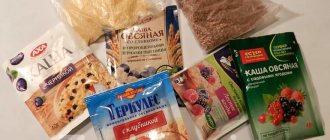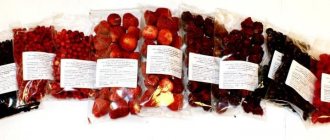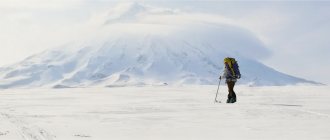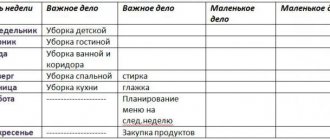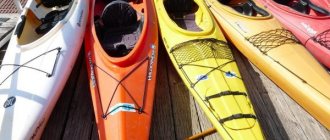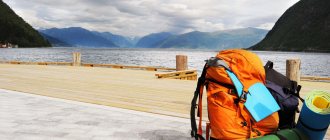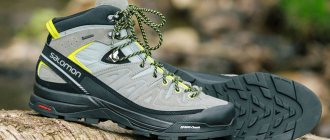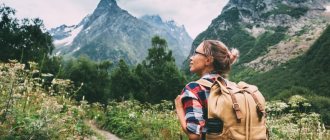What is product layout
A food layout for a hike is a menu compiled for one person for one day. This is done for ease of meal planning. On long hikes, food plays an important role. It should be enough to provide a person with everything necessary. If there is not enough food, the body will be weakened and the expedition will be in danger of failure. It is important to know how many days a person can live without food, so as not to become a hostage to the situation.
In addition, lack of strength affects your mood in a far from positive way.
It is also necessary to properly think through nutrition in order not to burden the participants of the hike with an unnecessary burden. For example, instead of canned food, it is better to take dried meat. It's much lighter and doesn't come in a heavy metal can. Correct calculation will allow you to avoid such thoughtless waste of human resources.
Payment cards for the layout of products for the hike.
Now all that remains is to calculate the number of products for each day. But here it is not enough to write down norms, as with the empirical method. You still need to maintain the planned calorie content, weight and ratio of components. This is a task worthy of a computer, but a payment card can make the job much easier. For convenience and clarity, we will note in the title of the card the day of the hike for which it is intended, and the segment of the path that will have to be overcome on this day, indicating the characteristic obstacles.
Now we write the menu, and in separate columns - the norms per person and the calorie content and chemical composition of the products corresponding to these norms. In the last columns at the end of the calculation we enter the mass of products for the entire group. The composition of the group may change before the hike, so we will write down several options on the card in advance. Having filled out the card, we summarize the results for all columns. If the mass of the products is, for example, 950 g, the caloric content is 2750 kcal, and the ratio of the components is 1: 0.2: 7, it is obvious that the mass is large and the caloric content is small. Analyzing the chemical composition, we see that there is not enough fat and too many carbohydrates.
Then we reduce the amount of low-calorie foods and instead add high-calorie foods containing fats. Thus, we bring the mass, calorie content and chemical composition of products into accordance with the planned values. A calculator will help you perform the calculations. Of course, it is not necessary to take such cards on a hike; it is enough to write down the menu and food allowances for the group in a notebook.
There is also no need to create new cards for each trip. You just need to make adjustments based on the results of the previous trip and rearrange the cards in accordance with the altitude chart or load chart of the new trip. After the rations for each hiking day have been calculated, we draw up a general list of products for the entire hike, and if intermediate drops are planned, then also packing lists for each drop.
Based on materials from the book Food on a Hiking Trip. Alekseev A.A.
How to create a product layout
First of all, you need to write down a sample menu for one person. For example: breakfast will consist of porridge and tea, lunch of sandwiches, dinner of soup. To correctly create a layout, you need to focus on energy consumption. For example, for walking on flat terrain, two to three thousand kilocalories per day are enough. If the terrain is uneven, then three to four thousand kilocalories. And, for example, when rafting down a river or climbing a mountain, more than four thousand kilocalories.
- To save food, you can follow the laid out route. Calculate on which days the body will receive more load and on which days less. And create a menu taking these days into account.
- The next step is to count the kilocalories contained in food. In addition to energy, it is also necessary to count the amount of proteins, fats and carbohydrates. In the morning you need carbohydrates, at lunch you need more protein, in the evening you can eat something containing more fat.
- Using a menu for one person on one day, you can make changes in order to diversify the food on the hike. This is necessary not only for the body, but also to raise morale - few people like to eat the same thing every day for two weeks. It will be enough to limit the variety to three or four options. They can be repeated every few days.
- In addition to basic food, there is also a dry ration. It is given to expedition participants in the morning, during breakfast, and everyone has the opportunity to eat it during the day as soon as they want. This is necessary to recharge with fast carbohydrates, and to make it easier to wait for the main meal.
- For unforeseen situations, spare power is taken. For a day. These can be freeze-dried soups and purees.
- In order to calculate the amount of products needed for the entire expedition, you need to take the amount consumed at a time by one person, multiply by the number of times this product will be used and by the number of people. These are long and painstaking calculations, however, if they are done correctly, the result will not be long in coming - namely, energetic and satisfied comrades will not forget to thank you for proper nutrition.
We recommend reading:
Sights of Venice
Product layout table.
Menu layout: why and how to create it?
Each member of the tour group, as a rule, performs some functions. There is a leader, there is a supervisor in charge of equipment, there is a technician and even a doctor. Plus a photographer, timekeeper, cartographer... Who's forgotten? The cook, who is also the supply manager. We will entrust him with drawing up the main culinary document.
To a person who has never been involved in compiling something like this before, the menu layout seems almost like Chinese writing. “I certainly won’t be able to handle this,” the newcomer thinks, and to the question “What are we going to eat?” asks to take something to your liking. This is a sure way for the group to have no salt, but only three kilograms of pasta. And all because the participants simply took from home what was available, without noticing the little things beyond the basics.
In fact, the menu layout is not difficult to create, and it is convenient to use. Essentially these are two different documents - a menu and a layout. Moreover, one follows from the other. And we are all familiar with the menu one way or another. It must contain the name of the dish and its ingredients. We will create the menu in the form of a regular table.
Before you start planning your menu, have a plan for your trip in front of you. Clearly understand how early you will get up, whether there will be time for a full lunch or whether you will have to limit yourself to a snack, whether the group is in danger of spending the night without water, how many kilometers you will need to walk in a day. Now you can start creating the menu.
We create a spreadsheet - in Word or Excel, it doesn’t matter. You will need four columns: “Trip Day”, “Dish”, “Products” and “Notes”. In the first column in each new line we indicate not only the day of the hike, but also the day and month. This will make it easier to navigate. The “dish” will be divided into three lines on each camping day - for breakfast, lunch (snack) and dinner.
To brighten up camp life, come up with funny names for dishes like “Tourist’s Joy”, “Camping Burda”, “Oatmeal, sir”. Believe me, no one will be indignant at the sight of the position “Toothless Childhood,” whereas for a simple “Semolina Porridge” a cook can be anathematized!
“Products” is the most important line of your menu. This is where all the components of your dish are carefully taken into account. Let's look at a specific example based on 10 people . We will prepare naval pasta and tea. You will need a kilogram of pasta, at least 2 standard 400-gram jars of stew, bay leaf - 2 leaves, sauce - 1 pack, salt - 2-3 tbsp. spoons, as well as spices, about 30 grams of tea (one-third of a 100-gram pack), 200 grams of sugar. This is the minimum without which it will not be possible to prepare a dish.
In the “Notes” we indicate everything except. For example, the time or features of preparing a particular dish. You can write down variations on the theme “if you forgot something.” The chef's imagination will help with this.
Is the menu ready? Let's start with the layout. Without any table, just a list on the next sheet. It is more convenient to first write down all the cereals in a column, then canned food, then vegetables, and then other teas, spices and bread. Did you manage? We call on all the remaining talent of a mathematician to help and in the most detailed way, with an accuracy of a gram, we calculate the quantity of each product according to the list.
Moreover, it’s better to take half a kilo more sugar than the layout says - there will always be those in the group who like it sweeter. Adding a hundred grams of cereal is also not forbidden: then there will be something to pour additives from with a generous hand.
We calculated the layout and found out the number of products. Now we distribute them among the participants, strictly recording who carries what and how much. Then we print out the resulting document in three copies - for the cook, the duty officer and the reserve.
Like any document, the layout menu requires unquestioning execution. Therefore, the caretaker, who is also a cook, must have not only culinary talent, but also an unbending will. And let the offensive word “zazhimprod” stick to you, but you should only give out for cooking what is indicated on the menu. Otherwise, there is a chance you will remain hungry halfway, and you will again find yourself at fault.
The talent of the caretaker, a miser and a thrifter by nature, is usually assessed on the last day of the trip, when some goodies saved along the route are literally thrown out of the sleeve and onto the makeshift table. And what could be more pleasant for a cook than an empty cauldron, shiny bowls and stormy applause, when to the question “Chef, haven’t all the dishes been eaten yet?”, you can honestly answer: “No”!
Tags: products, menu, tourism, food, nature, food, hike, kitchen, menu layout
Purchase of products and their replenishment
This point of preparation for the trip is handled by the supply manager - a selected person who draws up the layout, controls food supplies, and distributes dry rations. He also manages the purchase of products.
It is best to purchase products at the market. You will need a lot of them, and the trip is a very expensive undertaking. In addition, an undeniable advantage of the market is the opportunity to try, inspect, and touch the product being purchased.
Sublimated products can be ordered through the online store. It's both cheaper and more convenient. Moreover, in the modern world, you can read reviews about almost everything and find a manufacturer that others have tried.
If the route passes through populated areas, provision can be made for replenishing supplies there. It is better not to use the services of impromptu markets ; the quality of the products cannot be checked, and the consequences can be disastrous and delay the entire expedition.
Also, products can be replenished using natural resources. We are talking about mushrooms, berries and living creatures. It’s great if you’re parking near a pond—you can fry some fish or cook some amazing fish soup. In addition, you can bake acorns and corn in coals. Or fry freshly picked mushrooms.
In addition, you can stock up while on a hike. For example, you can dry mushrooms over a fire. This will require luck, because without it it is difficult to find a mushroom clearing in an unfamiliar area, a rich harvest, a knife and sticks. The rafts, cleared of dirt, are strung on sticks and stuck around the fire. A few hours and the supplies are ready.
The next day you can cook a delicious mushroom soup.
Author of the publication
offline 3 years
Nika
10
I am interested in hiking and traveling, photography and videography. I have been going hiking since childhood. The whole family went and went - sometimes to the sea, then to the river, to the lake, to the forest. There was a time when we spent a whole month in the forest. We lived in tents and cooked over fires. This is probably why I am still drawn to the forest and, in general, to nature. I travel regularly. About three trips a year for 10-15 days and many 2 and 3 day hikes.
Comments: 0Publications: 668Registration: 10/23/2018
Nika Survival in the wild, Nutrition in the wild, Articles
Weight standards for food layouts
Standard layout
The weight norm of the food layout depends on the daily calorie content calculated for one person. And the daily calorie content, in turn, depends on the complexity of the hike:
- Simple hikes in the middle zone, for 1-3 days: 2500-3000 kcal per day, this is about 700 g per person;
- Mountain hikes of I-III categories of difficulty: 3000-3500 kcal per day, this is about 800-900 g per person;
- Difficult mountain hikes of IV-VI categories of difficulty, hikes in the highlands: 4000-4500 kcal per day. This amount of calories can be obtained from 1000-1100 g of food.
The weight is indicated taking into account the fact that the layout consists of regular products, and not dried or freeze-dried ones. And this is only in theory. In reality, as the complexity of the hike increases, the weight of the layout is reduced to the maximum, often sacrificing the required calorie content.
Lightweight layout
Lightened does not mean “hungry”. Inexperienced tourists, in pursuit of reducing the weight of their backpack, strive to reduce their food intake by simply removing heavy foods. But it is difficult to complete the route on a meager ration, since the body will constantly make up for the lack of energy using internal reserves. The consequence of this: constant fatigue and hunger, poor sleep and exhaustion by the end of the journey. It makes sense to make the layout easier in the first days of the hike, when the body adapts to the altitude and most of the group usually has no appetite. And the further into the mountains, the higher the tourist’s appetite.
A meal weighing 300-400 g from ordinary products does not provide the 3500-4500 kcal needed for a difficult hike. High caloric content can be achieved due to the predominance of dietary fats in the diet, but the body is not able to absorb them in such quantities. If you make a layout based on dried foods and freeze-dried foods, remove canned food and excess water, you can achieve the same 400 g, but the diet will be more varied and nutritious. You need to experiment carefully: on difficult long hikes and especially in cold mountains, you always need to remember about sufficient calorie content and diet diversity.
